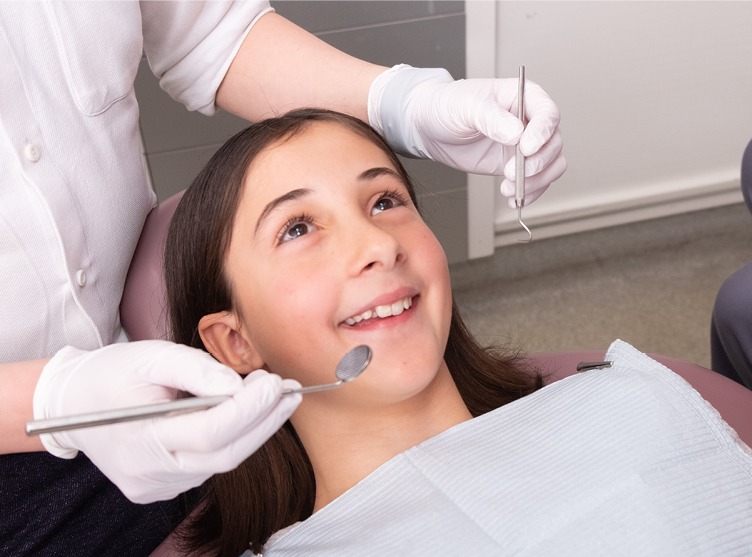3 Simple Techniques For Legacy Orthodontics
3 Simple Techniques For Legacy Orthodontics
Blog Article
The Best Strategy To Use For Legacy Orthodontics
Table of ContentsThe 45-Second Trick For Legacy OrthodonticsThe Single Strategy To Use For Legacy OrthodonticsUnknown Facts About Legacy OrthodonticsLegacy Orthodontics for DummiesAbout Legacy Orthodontics
At Advanced Orthodontics, we supply patients with a holistic therapy experience. Furthermore, we supply adjustable therapy routines, adaptable payment choices and an enjoyable, enjoyable experience. leesburg clear braces. Phone call ( 480) 357-4900 today for even more info and timetable a consultation.An orthodontist is a dentist trained to identify, prevent, and treat teeth and jaw abnormalities. Orthodontists function with individuals of all ages, from youngsters to grownups.
Malocclusion, or misaligned teeth, can result in dental concerns, consisting of tooth degeneration, gum tissue disease, and tough or uncomfortable chewing. However not everyone is born with straight teeth. If you have a poor bite or big areas in between your teeth, you might intend to get in touch with a dental professional concentrating on orthodontic treatment.
Our Legacy Orthodontics Ideas
( Picture Credit Rating: DigitalVision/Getty Images) Orthodontists make use of taken care of and detachable dental tools, like braces, retainers, and bands, to transform the position of teeth in your mouth. Orthodontic treatment is for dental problems, including: Uneven teethBite issues, like an overbite or an underbiteCrowded teeth or teeth that are also far apartJaw misalignmentThe goal of orthodontic treatment is to boost your bite.
A healthy bite ensures you can consume, eat, and talk appropriately. While you may think of orthodontists as primarily for kids or teenagers who need braces, they can correct dental troubles at any age. Orthodontists go to college, oral school, and orthodontic college. After graduation, they spend 2 or 3 years in an orthodontic residency program.
All orthodontists are dentists, but not all dental professionals are orthodontists. Orthodontic residency programs supply extensive, focused direction for dental experts. They focus on two areas: How to effectively and securely relocate teeth Just how to appropriately guide growth in the teeth, jaw, and faceOnce an orthodontist has actually finished training, they have the alternative to come to be board accredited.
Unknown Facts About Legacy Orthodontics
Imbalance, or malocclusion, is the most usual factor people see an orthodontist. It is hereditary and is the result of dimension differences between the top and reduced jaw or in between the jaw and teeth. Malocclusion leads to tooth congestion, a misshapen jaw, or irregular bite patterns. Malocclusion is typically treated with: Your orthodontist affixes metal, ceramic, or plastic square bonds to your teeth.
If you have just small malocclusion, you may be able to use clear dental braces, called aligners, as opposed to traditional dental braces (https://pagespeed.web.dev/analysis/https-www-legacyortho-com/fjbdpbv998?form_factor=mobile). Some people require a headwear to help move teeth into line with stress from outside the mouth. After dental braces or aligners, you'll need to use a retainer. A retainer is a custom-made device that keeps your teeth in position.
They're most commonly made use of on youngsters. They can produce added room in the mouth without having to draw teeth. If you have a major underbite or overbite, you might require orthognathic surgical procedure (likewise called orthodontic surgery) to extend or reduce your jaw. Orthodontists use cables, surgical screws, or plates to sustain your jaw bone.
You might need to see an orthodontist if you have: Crowding or not adequate room for all of your teethOverbite, when your upper teeth come over your base teethUnderbite, when your base teeth are as well much forwardSpacing or browse around this site problems with gapsCrossbite, which is when your top teeth fit behind your bottom teeth when your mouth is closedOpen bite or an upright space between your front base and upper teethMisplaced midline, when the center of your base and top teeth don't align Remedying an oral malocclusion can: Make biting, eating, and talking easierImprove the symmetry of our face and your general appearanceEase pain from temporomandibular joint disordersSeparate your teeth and make them less complicated to cleanse, helping stop tooth decay or tooth cavities It's usually a dentist who first notifications misaligned teeth during a routine examination.
10 Simple Techniques For Legacy Orthodontics

Throughout your first orthodontic examination, you'll likely have: An oral examPhotos taken of your face and smileDental X-raysPanoramic (360 level) X-rays of your face and headImpressions to create molds of your teethThese examinations will certainly aid your orthodontist know exactly how to continue with your therapy. orthodontics. An orthodontist is a dental professional that's had training to treat your teeth and jaw
An orthodontist is concentrated on your bite, so something like a broken tooth would certainly be taken care of by a dentist. Orthodontists are focused on your bite, or the means your teeth fit together, and the straightness of your teeth.
Ever questioned just how celebs constantly appear to have flawlessly aligned teeth? The solution usually hinges on the experienced hands of an orthodontist. What exactly does an orthodontist do? Orthodontists are oral professionals that concentrate on remedying irregularities in the teeth and jaws. Their proficiency exceeds simply creating a lovely smile; it prolongs to boosting your general dental health and function.
Getting The Legacy Orthodontics To Work

, orthodontists have a varied toolkit at their disposal. These tried-and-true dental braces utilize a system of brackets bound to the teeth and connected by cords.
Clear aligners, like Invisalign, are a popular alternative for people seeking a more very discreet treatment option. These removable trays are tailor-made to progressively move the teeth's placement. Headgear may be made use of along with dental braces or aligners to apply additional targeted forces, especially for fixing jaw discrepancies. In cases of slim jaws, palatal expanders can be used to produce area for appropriate tooth positioning.
Report this page